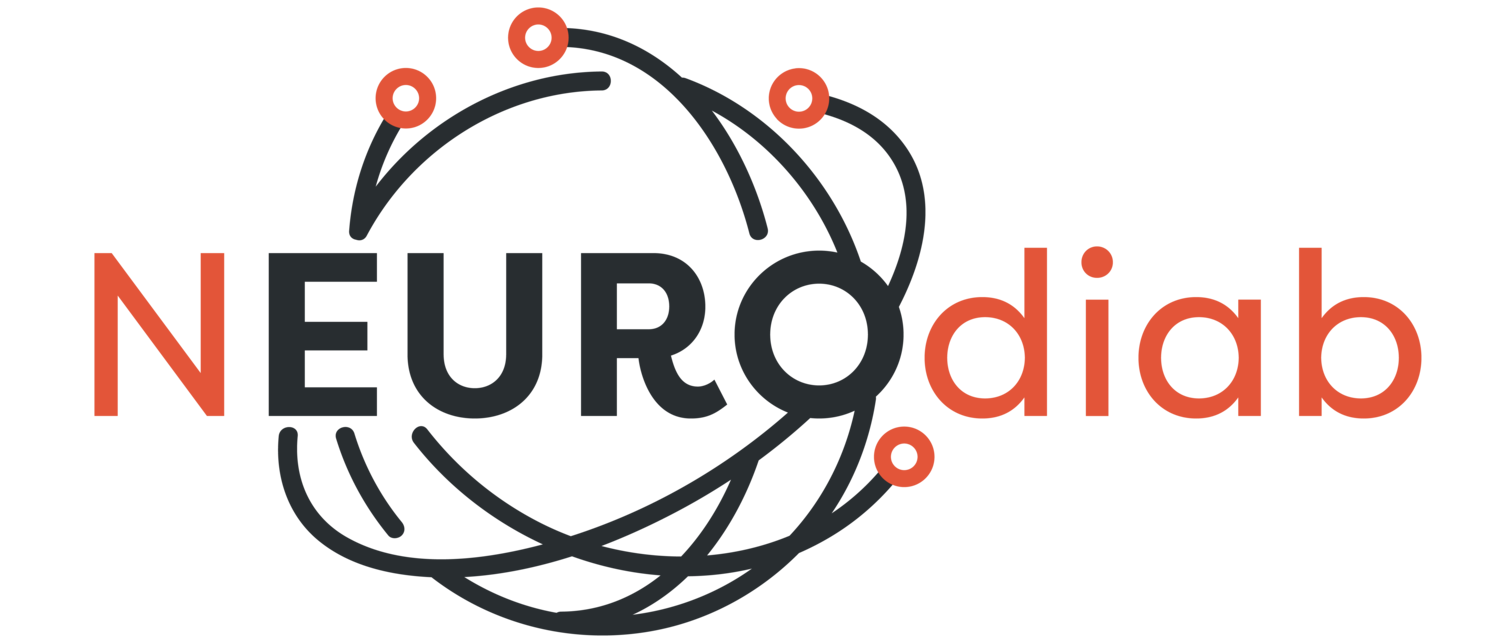Publication News 199 - 03 November 2025
When nerves starve: a rare gene defect reveals NAD⁺'s life-or-death role
Aims: To identify the molecular defect underlying a newly described inherited sensory–motor neuropathy and to determine whether impaired nicotinamide-adenine-dinucleotide (NAD⁺) metabolism is sufficient to cause axonal degeneration in humans and experimental models.
Methods: Whole-exome sequencing in two affected siblings (presenting with impaired motor coordination, muscle atrophy, finger and foot deformities, and positive Babinski sign) revealed a homozygous missense mutation in NAMPT (c.472G>C; p.P158A), the key enzyme of the NAD⁺-salvage pathway. The authors combined biochemical assays of enzyme kinetics, metabolic analyses in patient fibroblasts (NAD⁺ levels, mitochondrial respiration, oxidative stress) and a knock-in mouse model carrying the same mutation. Structural and functional read-outs included peripheral-nerve histology, axon counts, myelination, nerve-conduction velocity and behavioural testing.
Results: The p.P158A substitution reduced NAMPT activity and markedly decreased cellular NAD⁺ content. Patient cells displayed mitochondrial dysfunction and excess reactive oxygen species. Mutant mice developed progressive, length-dependent axonal loss in both motor and sensory nerves, reduced conduction velocities and locomotor impairment, faithfully reproducing the human phenotype of distal weakness, foot deformities and sensory deficits.
Conclusions: This study identifies a novel inherited axonopathy driven by impaired NAD⁺-salvage metabolism, termed MINA syndrome (Mutation in NAMPT Axonopathy) by the authors. It shows that partial NAMPT deficiency alone can trigger axonal degeneration, establishing metabolic vulnerability as a key mechanism and identifying the NAMPT/NAD⁺ pathway as a therapeutic target for peripheral neuropathies.
Comments. This study makes a major contribution to peripheral neuropathy research by connecting a single genetic variant to a fundamental metabolic pathway. The translational approach, moving from human genetics through patient-cell biochemistry to in vivo modelling, is particularly compelling. Most importantly, the work establishes that baseline NAD⁺ supply via NAMPT is not simply supportive but determinant for peripheral nerve health. The findings integrate elegantly with emerging work on NMNAT2-SARM1 signalling (Figley MD et al Neuron. 2021; 109(7): 1193–1206.e6), where SARM1 acts as a metabolic sensor that triggers axon death when NAD⁺ levels fall. Now we see the full picture, NAMPT makes NAD⁺, NMNAT2 distributes it along axons, and SARM1 destroys axons when the system fails. This isn't just about one rare disease, it's a metabolic framework that likely explains multiple neuropathies, including diabetic nerve damage. Limitations must be acknowledged. The human cohort comprises only two siblings, restricting our understanding of phenotypic variability and disease natural history. The selective vulnerability of peripheral versus central neurons deserves deeper investigation. Most critically, therapeutic rescue through NAD⁺ precursors or SARM1 inhibition remains experimentally undemonstrated. Nonetheless, the work provides strong justification for exploring NAD⁺ repletion strategies not only for this newly described condition but potentially across the spectrum of metabolic neuropathies. It underscores a key vulnerability: peripheral nerves, with their meter-long axons and high energy demands, are highly sensitive to subtle disruptions in metabolic homeostasis. Ultimately, this study advances a fundamental principle, that energy metabolism and axonal integrity are molecularly coupled, and reinforces the idea that targeting metabolic resilience could complement traditional approaches to prevent or slow neuropathy progression.
Ali Jaafar
Reference. Zhang Z, Pilch J, Lundt S, Zhang N, Chang Y, Singer T, Śladowski D, Hu XL, Zheng L, Ge WP, Zhang H, Li DP, Han X, Ploski R, Ding S. A sensory and motor neuropathy caused by a genetic variant of NAMPT. Sci Adv. 2025 Sep 26;11(39):eadx2407. doi: 10.1126/sciadv.adx2407. Epub 2025 Sep 26. PMID: 41004591; PMCID: PMC12467057.
🔗 https://www.science.org/doi/10.1126/sciadv.adx2407
